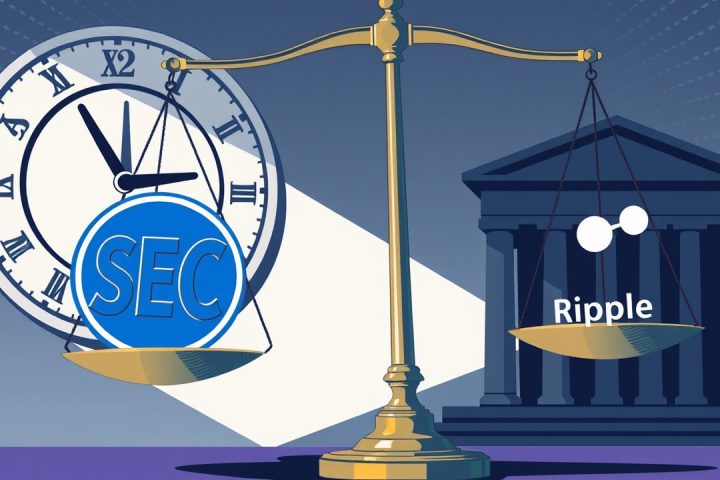The Transformation of Stablecoins
The landscape of stablecoins is undergoing significant transformation, highlighted by Paxos’ recent introduction of the USDG stablecoin in the European Union. This launch comes as U.S. policymakers grapple with calls for enhanced regulatory measures concerning stablecoins. In Congress, the GENIUS and STABLE Acts are advancing through legislative discussions, but concerns linger that these proposals may not adequately protect the financial ecosystem.
Paxos and the USDG Launch
On Tuesday, Paxos confirmed that its USDG stablecoin is now active on various cryptocurrency platforms operating in the EU, such as the well-known exchanges Kraken and Gate.io. This milestone is a part of Paxos’ ambitions to establish a robust Global Dollar Network (GDN). The USDG’s release is compliant with the European Union’s Markets in Crypto-Assets (MiCA) framework, a significant step in creating coherent digital asset regulations across Europe.
Paxos ensures USDG adheres to MiCA’s stringent requirements regarding reserves, transparency, and audits, with issuance managed by Paxos Issuance Europe OY, based in Finland and overseen by the Finnish Financial Supervisory Authority (FIN-FSA).
Partnerships and Regulatory Compliance
The firm has also aligned with Singapore’s monetary authority, showcasing its commitment to maintaining regulatory standards internationally. Significant partnerships have been formed with various fintech and cryptocurrency entities, including Coinmetro, SwissBorg, Zodia Custody, Orbital, Hercle, CoinsPaid, Bitwyrem, Bitnet, and HiFi, along with launch collaborators Kraken and Gate.io.
Mark Greenberg from Kraken remarked on USDG’s potential impact as a cornerstone of contemporary financial frameworks, stating, “As stablecoins emerge as essential infrastructure for global finance, USDG shines for its versatility and expanding ecosystem.”
The backing of USDG includes robust one-to-one redemption guarantees, with a portion of reserves preserved in European banks, thereby maintaining stability and complying with MiCA mandates. Paxos has built a solid reputation for its regulatory compliance, having previously introduced the USDP stablecoin and collaborated with heavyweights like PayPal and Mastercard.
Market Trends and Future Implications
The wider implications of USDG’s launch align with Paxos’ vision for the GDN, which aims to enhance the use of digital dollars in mainstream finance. Launched in late 2024, the GDN seeks to integrate over 20 partners from traditional finance and fintech sectors, aiming to create a comprehensive stablecoin framework.
Mastercard’s recent announcement to back USDG in its stablecoin initiatives is a clear sign of the increasing acceptance of digital assets within established finance. This collaboration is expected to facilitate stablecoin transactions for global merchants and financial institutions.
The emergence of the USDG arrives amidst a notable surge in the overall stablecoin market, with DefiLlama reporting that the total market capitalization reached $253.9 billion by early July 2025, rising from $239 billion just weeks earlier. Institutional and retail interest in blockchain-based dollar alternatives continues to grow, particularly as yield-bearing stablecoins gain traction.
The appeal of yield-bearing stablecoins has seen them balloon in market size from $1.5 billion at the beginning of 2024 to $11 billion today, capturing approximately 4.5% of the stablecoin arena.
Regulatory Landscape in the U.S.
Coinbase data indicates a robust year-over-year tripling of stablecoin usage since 2024, primarily as a result of businesses and consumers seeking more efficient payment solutions. The MiCA framework, implemented in 2024, has streamlined digital asset regulations within the EU, establishing clear reserve requirements, audit processes, and consumer protections—conditions that align well with Paxos’ operations.
As USDG continues to meet these requirements and garner approvals from regulators in Finland and Singapore, Paxos positions itself at the forefront of compliant digital finance. With the GDN expanding and USDG’s acceptance likely growing across Europe, Paxos could lead a transition towards a new era of interoperable and regulatory-compliant digital currencies, linking traditional finance with decentralized frameworks globally.
In the U.S., however, New York Attorney General Letitia James has been vocal about the need for stronger protections in light of ongoing legislative efforts for stablecoin regulation. In a recent letter to congressional leaders, she expressed her apprehensions over two significant stablecoin bills: the Senate’s GENIUS Act and the House’s STABLE Act, asserting that current legislation does not effectively mitigate risks to the American financial system.
James advocated for regulations similar to those imposed on banks for stablecoin issuers, including deposit insurance, to protect consumers in case of issuer insolvency. She urged that the Federal Reserve be entrusted with the oversight of non-bank stablecoin issuers to minimize political influence on regulatory decisions.
The GENIUS Act, which has garnered bipartisan approval in the Senate and presidential endorsement, aims to ensure stablecoins are backed entirely by U.S. dollars or equivalent assets, imposing mandatory annual audits for significant issuers. Meanwhile, the House’s STABLE Act, although approved by the House Financial Services Committee, still awaits a vote and takes a different approach regarding state and foreign issuers compared to the GENIUS Act.
James has previously raised alarms about foreign stablecoins like Tether (USDT) and their potential systemic risks to U.S. monetary stability. Her latest correspondence reiterates the critical need to avoid regulatory loopholes that would allow foreign dominance over U.S. stablecoin infrastructures without sufficient oversight.
As the market for stablecoins—which are pegged to fiat currencies like the dollar—evolves into a multi-hundred-billion-dollar sector, the demand for clear regulatory guidelines intensifies, particularly following past market instabilities, such as the collapse of algorithmic stablecoins and various enforcement actions against unauthorized issuers. The entrance of traditional financing entities into this field only amplifies the urgency for defining a balanced regulatory landscape that fosters innovation while ensuring financial security.




